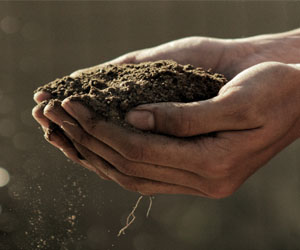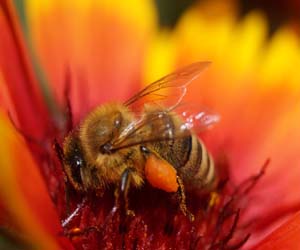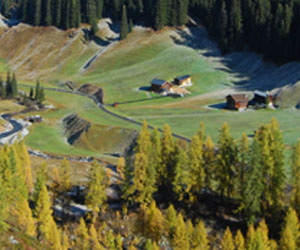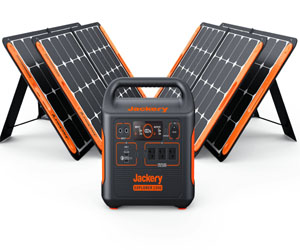



Soil preparation is a fundamental step in gardening that often determines the success of your plants. It's a blend of art and science, where the right balance of nutrients, texture, and structure is crucial for a thriving garden. Here, we explore the significance of soil preparation and the key steps to achieving fertile, healthy soil.
Importance Of Soil Preparation
The quality of your soil directly impacts plant growth. Properly prepared soil:
Enhances Nutrient Availability: It provides essential nutrients for plant growth and development.
Improves Drainage: Well-prepared soil ensures that water doesn't pool around plant roots, preventing root rot.
Promotes Root Development: Loose, well-aerated soil allows roots to grow deep and strong.
Supports Beneficial Microorganisms: Healthy soil teems with microorganisms that aid in breaking down organic matter and making nutrients available to plants.
Steps For Effective Soil Preparation
Soil Testing: Start with a soil test to determine its pH level and nutrient content. This guides you in making necessary adjustments.
Clear The Area: Remove any weeds, rocks, or debris from the planting area to provide a clean slate for your garden.
Amend The Soil: Depending on the soil test results, amend your soil with organic matter like compost, well-rotted manure, or peat moss. These materials improve soil structure and nutrient content.
Till The Soil: Use a tiller or a spade to mix in the amendments and break up compacted soil. The goal is to create a loose, well-aerated soil structure.
Mulch The Surface: Apply a layer of organic mulch to conserve moisture, regulate soil temperature, and suppress weed growth.
Maintain Soil Health: Regularly test and amend your soil as needed. Crop rotation and cover cropping can also help maintain soil fertility.
Water And Monitor: After planting, water your garden beds appropriately, keeping the soil consistently moist but not waterlogged. Monitor plant health for signs of nutrient deficiencies.
Soil preparation is not a one-time task; it's an ongoing process. Healthy soil is the foundation of a productive garden, and it requires attention and care. With the right preparation, your garden will thrive, producing abundant harvests and blooming with vibrant flowers. Whether you're a novice gardener or an experienced one, soil preparation is a critical step in your journey toward gardening success.
Embracing Simplicity And Freedom
 2. Minimalist Living
2. Minimalist Living
The compact lifestyle often goes hand in hand with minimalist living. Minimalism is the art of living with less, focusing on quality over quantity, and savoring life's experiences over material possessions. This approach allows individuals to focus on what truly matters and brings joy, while reducing the overwhelming feeling of too much stuff.
3. Environmental Consciousness
Embracing a compact lifestyle also leads to a greater sense of environmental consciousness. Smaller living spaces mean reduced energy consumption, less waste, and a lower carbon footprint. This lifestyle choice can significantly contribute to a more sustainable and eco-friendly way of living.
4. Financial Freedom
Living a compact lifestyle can lead to significant financial benefits. With fewer expenses related to housing, maintenance, and possessions, individuals have the opportunity to save more, invest wisely, and gain financial freedom. This financial independence can open doors to new opportunities and experiences.
5. Freedom To Travel
A compact lifestyle often provides the freedom to travel and explore the world. With fewer material possessions tying you down, you can easily pick up and go, embracing a nomadic lifestyle or simply enjoying more frequent getaways. Travel becomes an essential part of experiencing life to the fullest.
Gardening For Wildlife
 Pest Control: Many of the creatures you invite into your garden, such as birds and beneficial insects, are natural pest controllers. They help keep populations of garden-damaging insects in check.
Pest Control: Many of the creatures you invite into your garden, such as birds and beneficial insects, are natural pest controllers. They help keep populations of garden-damaging insects in check.
Pollinators: Gardens that attract pollinators like bees and butterflies ensure the successful pollination of plants, leading to bountiful harvests of fruits, vegetables, and flowers.
Education: Gardening for wildlife is an educational opportunity for children and adults alike. Observing the behavior and interactions of birds, insects, and other creatures fosters a deeper appreciation for nature.
Aesthetics: A garden designed for wildlife can be a beautiful and thriving oasis, filled with the sights and sounds of the natural world. It can be a serene and inviting place for human enjoyment.
Tips For Gardening For Wildlife:
Plant Native Species: Native plants provide food and habitat for local wildlife. Research which plants are native to your area and incorporate them into your garden.
Provide Water: Birds, insects, and other wildlife need water for drinking and bathing. Install a birdbath or a small pond to offer a water source.
A Sustainable Solution For A Thirsty World
 Types Of Water Reuse Systems
Types Of Water Reuse Systems
Direct Potable Reuse (DPR): DPR systems treat wastewater to a high standard and then inject it directly into a drinking water supply, bypassing the need for natural recharge. Although this approach is effective, it requires advanced treatment processes and stringent monitoring to ensure water quality and safety.
Indirect Potable Reuse (IPR): IPR systems involve the injection of treated wastewater into an environmental buffer, such as an aquifer or reservoir, before it is eventually extracted for drinking water treatment. This approach provides an additional layer of natural treatment and is considered a safer alternative to DPR.
Non-Potable Water Reuse: Many water reuse systems are designed for non-potable applications. These systems treat wastewater to a level suitable for purposes like irrigation, industrial processes, toilet flushing, and cooling systems in power plants. Non-potable water reuse significantly reduces the demand on freshwater sources for these activities.
Environmental And Economic Benefits
Water reuse systems offer several compelling benefits:
Conservation: Reusing water reduces the amount of freshwater withdrawn from rivers and aquifers, helping protect ecosystems and maintaining their natural flow.
Energy Savings: Treating and transporting water requires energy. By reusing water locally, we reduce the energy footprint associated with long-distance water conveyance.
Cost Reduction: Municipalities and industries can save on water treatment and distribution costs by adopting water reuse systems.
Reduced Wastewater Discharge: Water reuse decreases the volume of wastewater discharged into the environment, reducing the risk of pollution.






Illuminating The Future Of Energy
 At the heart of solar technology is the photovoltaic (PV) cell, which converts sunlight into electricity. This process is accomplished through a series of interconnected steps:
At the heart of solar technology is the photovoltaic (PV) cell, which converts sunlight into electricity. This process is accomplished through a series of interconnected steps:
Photon Absorption: When sunlight hits the PV cell, it excites electrons in the semiconductor material. These semiconductors are typically made of silicon.
Electron Movement: The excited electrons move through the semiconductor material, creating an electric current. This movement of electrons is what we harness as electricity.
Inverter Conversion: The electric current generated by the PV cells is direct current (DC). However, most of our electrical devices and appliances operate on alternating current (AC). An inverter converts the DC to AC, making it compatible with standard household electricity.
Energy Storage (Optional): Excess energy generated during the day can be stored in batteries for later use, especially during the night or on cloudy days.
Innovations In Solar Technology
Thin-Film Solar Panels: Traditional solar panels are made of silicon and are relatively thick. Thin-film solar panels use significantly less material and are lightweight, making them suitable for various applications, including flexible solar panels for curved surfaces or portable solar chargers.
Opportunities And Challenges For A Changing World
 The world's population has been steadily increasing for centuries, driven by a combination of factors, including increased life expectancy, reduced mortality rates, and, in some regions, high fertility rates. While the global population growth rate has been slowing down, it remains a significant concern due to its implications on resources, infrastructure, and quality of life.
The world's population has been steadily increasing for centuries, driven by a combination of factors, including increased life expectancy, reduced mortality rates, and, in some regions, high fertility rates. While the global population growth rate has been slowing down, it remains a significant concern due to its implications on resources, infrastructure, and quality of life.
One of the challenges associated with rapid population growth is the strain it places on resources. As the number of people on the planet increases, so does the demand for essentials like food, water, energy, and housing. This growing demand can lead to resource scarcity, environmental degradation, and increased competition for limited resources.